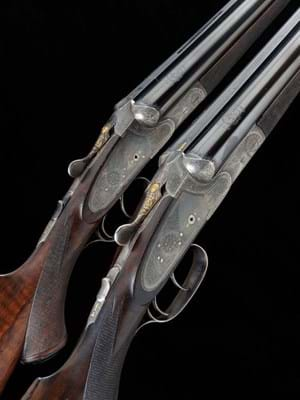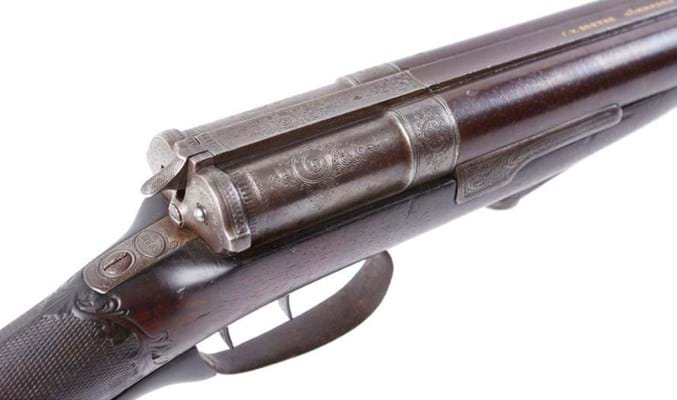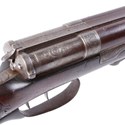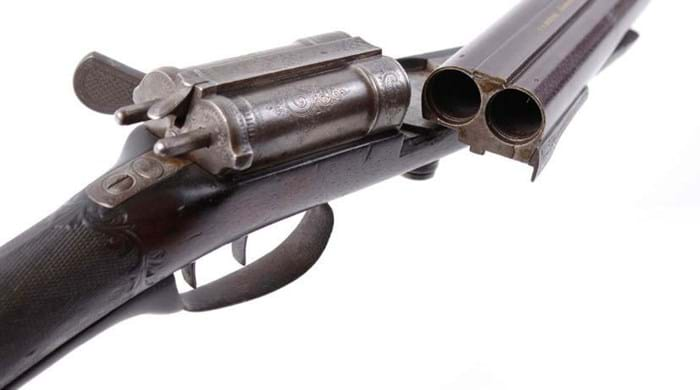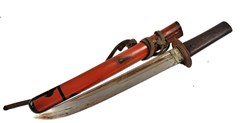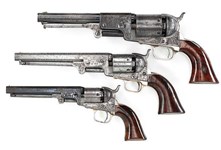The guns concerned were 16 bores made by C Wertgarner. The scroll and bouquet engraving on the lock was reminiscent of the best London game guns, though the half-pistol grips and sling swivels on stock and barrel betrayed their Continental origins.
Most interesting, though, were the gold inlaid crown monograms on each top lever, indicating the ownership of Ernest Augustus, Duke of Brunswick, the last reigning monarch of the House of Hanover.
After the Second World War, in July 1945, the duke found himself in a difficult predicament.
Under agreed protocols the Free State of Brunswick was supposed to be part of the British zone of occupation but a change in plan meant that the ducal seat at Blankenburg Castle suddenly ended up in Russian hands. The British army sent 30 trucks to evacuate the family and their chattels and these guns were presented to Colonel Paul McConnell of the Cheshire regiment for his part in rescuing the duke.
In May they sold above estimate for £10,000.
Needlefire novelty
Among the rarities at Southams’ (17.5% buyer’s premium) specialist sale in Bedford on March 14 was a 16-bore Dreyse Patent needlefire double-barrelled sporting gun.
Needlefire was one of the earliest systems in the development of a successful breech-loading cartridge gun.
The German gunsmith Johann Nicolaus von Dreyse began experimenting in the 1820s but it was not until 1836 that he patented his first viable cartridge gun. His cartridges were basically paper parcels containing powder and shot with a detonator between the two.
To ignite the charge a long, needle-like firing pin passed through the powder to strike the detonator. The system was famously adopted by the Prussian army and used successfully in the Austro-Prussian War of 1866.
There were inherent weaknesses in the system because the pin was thin and liable to corrode, so in the sporting field the system did not find great favour. Few examples appear in the rooms and this example was snapped up for £750.
Pinfire potential
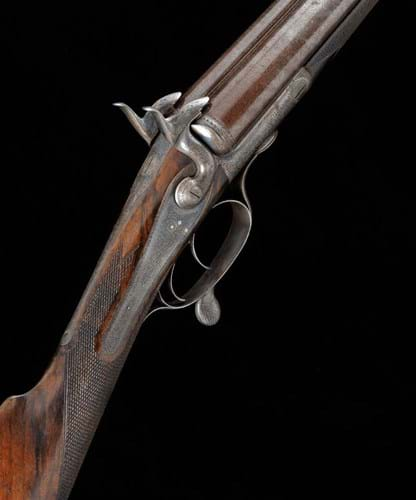
12-bore pinfire hammer gun by Stephen Grant c.1869 – estimated at £1200-1800 in Gavin Gardiner’s August 26 auction.
Among the interesting vintage shotguns due to feature in Gavin Gardiner’s annual sale of sporting guns at the Gleneagles Hotel in Scotland on August 26 will be a 12-bore pinfire hammer gun by Stephen Grant c.1869.
Pinfire was an early form of cartridge which incorporated its own firing pin. This concept was superseded by the conventional cartridge with a central primer and it is unusual to find good examples in shootable condition today. It is estimated at £1200-1800.


